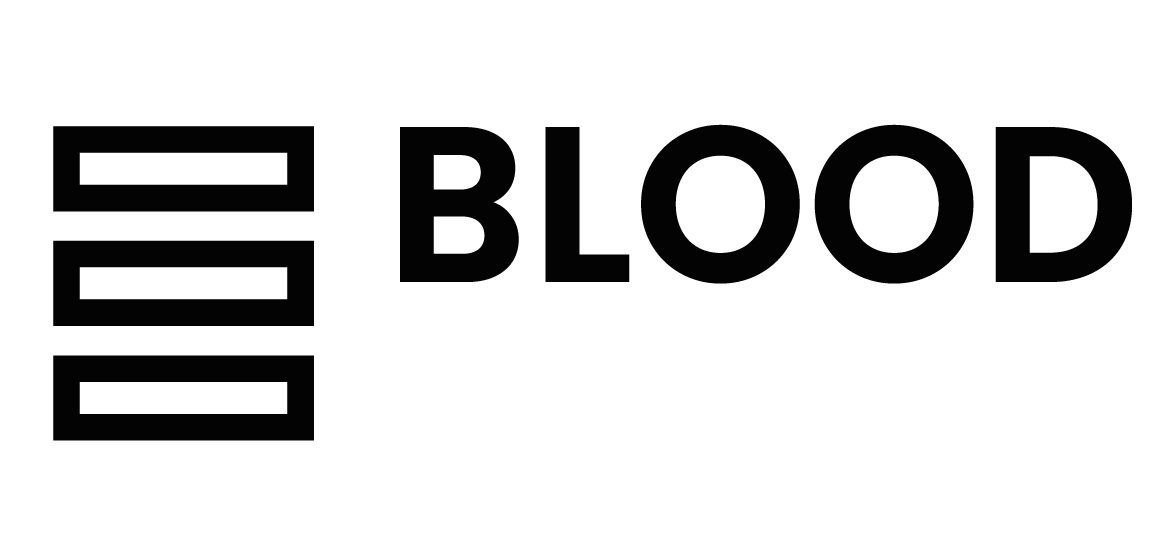Menstruation and The Menstrual Cycle
Not a Harry Potter book I'm afraid but still worth reading.
Here, we will be covering the main aspects of the menstrual cycle; what it is and why it happens.
DISCLAIMER: THIS BLOG POST DOES NOT PROVIDE MEDICAL ADVICE
The information in this blog post, including but not limited to the text, graphics, images, are for educational and informational purposes only. None of the material within this blog post is intended to substitute medical advice, diagnosis or treatment. Always seek the advice of a qualified medical professional such as your doctor when you have concerns or questions.
The menstrual cycle
The menstrual cycle plays a massive role in reproduction, making it kind of an important thing when you think about it. Without this cycle, humans would not be here today!
The cycle helps the body prepare for pregnancy. Menstruation occurs when pregnancy does not happen, and the cycle starts again.
An important thing to mention here is that the menstrual cycle that we are about to talk about is known as ‘the textbook menstrual cycle,’ which does not apply to everyone. There are changes between women, between the individual cycles of women, and abnormalities that are not ‘textbook’ but may be customary to you. So if you are unclear about your ‘normal’ cycle, it is best to speak with a medical professional to get super clear on what is happening in your own body.
So, the textbook menstrual cycle lasts for 28 days (this is why the moon speculations came about). But 'normal' cycles can last anywhere between 21-35 days. When lasting for anywhere between 21 and 35 days regularly (menstruation happens at the same time each cycle), the cycle is called eumenorrheic.
Do you know how long your cycle lasts?
(There are so many incredible ways to keep track of your cycle nowadays, with easy-to-use apps and whatnot, which helps you find out what's 'normal' for you).
The whole cycle is controlled by specific hormones (sex steroids) that act to switch bits of the cycle off and on at the right time.
The main four hormones are:
Figure 1. The changing concentrations of the critical sex hormones throughout the different stages of a eumenorrheic 28-day menstrual cycle [Created with BioRender.com].
- Estrogen (estradiol E2)
- Progesterone (progesterone P4)
- Follicle Stimulating Hormone (FSH)
- Luteinizing Hormone (LH)
The amounts of these critical hormones change throughout the menstrual cycle in a particular pattern, which is how the different stages of the cycle are initiated and able to occur (see Figure 1).
The Phases, Stages, and Events of the Menstrual Cycle
The Follicular Phase
The follicular phase is the ovarian term, but when we get into what is happening specifically to the uterine endometrium, this phase is known as the 'proliferative phase.'
This phase predominates the 'first half’ of the menstrual cycle and begins with one of the main events, menstruation (see Menstruation section below), and ends before the second main event, ovulation (see Ovulation section below).
At the beginning of the follicular phase, during menstruation, the sex hormones are all at low concentrations (see Figure 1). This is when the uterine endometrium proliferates (hence the name), controlled by an increasing amount of estrogen.
During menstruation, the endometrium has been shed (that's basically what your period is), so the follicular (proliferative) phase is when the endometrium begins to build itself back up again and thickens, proliferating. This rebuilding of the endometrium has recently been described as 'Pheonix-like' as it's almost like the endometrium rises up from the ashes and is reborn; it's actually a pretty cool focus of research today as the endometrium is repaired so quickly without any scarring or loss of function.
Anyway, besides this super cool rebuilding of the endometrium, within the ovaries, the number of follicles (fluid-filled sacs with an egg inside) are increasing, which in turn increases the amount of estrogen and FSH. At one point, a follicle within one of the ovaries is chosen as the 'dominant' follicle. The chosen one then doubles in size, and the egg inside develops and matures in preparation for ovulation.
Ovulation
When the estrogen level reaches a certain point, a rapid surge of LH is triggered. It is this increase in LH that causes ovulation to begin. During ovulation, the chosen follicle with the matured egg inside releases itself from the follicle wall because of the LH surge. It then basically explodes, releasing the egg into the uterus.
This event within a textbook menstrual cycle usually happens around day 14, right in the middle of the cycle between the follicular phase and the luteal phase.
The egg then begins its journey down the fallopian tube, hoping to meet the sperm of its dreams. Yep, this is part of the fertile window.. when pregnancy can occur. The egg survives for around 24 hours within the fallopian tubes, but sperm can survive up to 7 days. So if there is any sperm within the vagina, uterus, or fallopian tubes within this 24-hour window, fertilization between the egg and sperm can result in the creation of an embryo.
Figure 2. A eumenorrheic 28-day menstrual cycle .
The proliferative phase (follicular phase) is when estrogen (E2) is the dominant hormone. The endometrium builds itself back up, and the number of follicles increases within the ovaries. A follicle is chosen as the dominant one. A surge in LH and a decrease in estrogen trigger ovulation when the developing egg is released from the dominant follicle. The breakdown of the dominant follicle to form the corpus luteum results in an increase in progesterone and a subtle increase in estrogen that gets the endometrium ready for the possible implantation of a fertilized egg. In the absence of pregnancy, a decrease in progesterone leads to the start of menstruation, the breakdown, and shedding of the endometrium [Created with BioRender.com].
The luteal phase
Following ovulation, while the egg travels down the fallopian tube, the estrogen levels decrease, and progesterone levels increase. The follicle that did contain the egg is now called the corpus luteum. It is responsible for producing the progesterone signal and a small amount of estrogen. This rise in progesterone levels is what tells the now thick and fluffy endometrium to get 'sticky' and ready for implantation of an embryo. If fertilization takes place, the progesterone levels remain high to keep the endometrium healthy for the embryo's growth – for pregnancy. The luteal phase is also called the secretory phase in terms of the endometrium, as this is when the endometrium secretes all the stuff needed for implantation.
But, if the egg is not fertilized, the corpus luteum begins to break down, which decreases the amount of progesterone and estrogen within the uterus. It’s this withdrawal of progesterone that signals for menstruation to begin.
Menstruation
Menstruation; period; time of the month. This is it. We have gone full circle and back to the beginning of the menstrual cycle, the start of menstruation. So what is menstruation? Menstruation is when blood (and other things) leaves the body from the vagina. If you're interested in tracking your cycle, the first day you notice blood is day 1.
The blood is well, blood, and endometrial tissue, the broken down uterine endometrium. During menstruation, the uterus is continuously contracting and relaxing to help get all of the broken-down lining tissue out. These contractions are what some people know as 'period' which can cause significant pain for some women. The contractions are controlled by inflammatory mediators called prostaglandins, which act as little signal messengers alongside other molecules that regulate the acute inflammation that ultimately leads to menstruation. This whole series of events is caused by the sudden drop in progesterone levels caused by the breakdown of the corpus luteum within the latter stages of the luteal phase, which triggers the uterus lining to detach and break down.
Text-book menstruation takes between 4 to 6 days, with between 30 – 50 ml of blood leaving the vagina during this time. This period (get it?) can be associated with many symptoms such as pain and fatigue, just to name a few, with some women experiencing heavy menstrual bleeding with a larger volume of blood leaving the body than what's considered 'normal.'
Once the bleeding has stopped and the endometrial lining has been shed, the cycle continues with rebuilding the endometrium (remember the Pheonix from the ashes?), alongside a rise in estrogen levels (see Figure 2).
So why does menstruation happen?
Having gone through the menstrual cycle, you should have a clearer picture of what actually happens and the basic idea of why it happens... I mean, it’s how we reproduce, right?
But it's not that straightforward; in fact... we don't know why we do menstruate (as in the actual bleeding), still to this day. It’s only humans and a small handful of other mammals that do menstruate. Still, we know that it is important, which is why it happens and why it evolved in the first place.
And it's important that you are aware of your menstrual cycle and what's normal for you.
Awareness of your menstrual cycle is one thing; knowing what your cycle normally looks like and feels like so that you can seek help when things start looking or feeling a bit different… but awareness of your whole body, health and well-being; well that's just empowering.
Awareness of your menstrual cycle is one thing - knowing what your cycle typically looks like and feels like so you can seek help when things start looking or feeling a bit different... but awareness of your whole body, health, and well-being; Well, that's just empowering.
This empowerment comes with knowing when things are slightly off for you when things are not so normal, and then being able to take action right off the bat or even being able to improve what your normal is, upgrading your health and life so to speak.
Well, this is precisely what theblood aims to help you achieve. theblood is a company that strives to empower and change lives by providing this awareness. And how will we do that? By using your menstrual blood. Now it's got exciting, right?!
theblood aims to use menstrual blood to provide unprecedented insights into the menstruator's health, analysing data on vitamins, hormones, and other parameter levels - CLICK HERE to learn more.
GET INVOLVED
GET INVOLVED
Want to be a part of revolutionizing how the world views menstruation and menstrual blood and be a part of theblood's vision in making real change to the lives of women, individually and as a whole?
Be sure to sign up to our Newsletter to hear the latest updates!
Sources:






